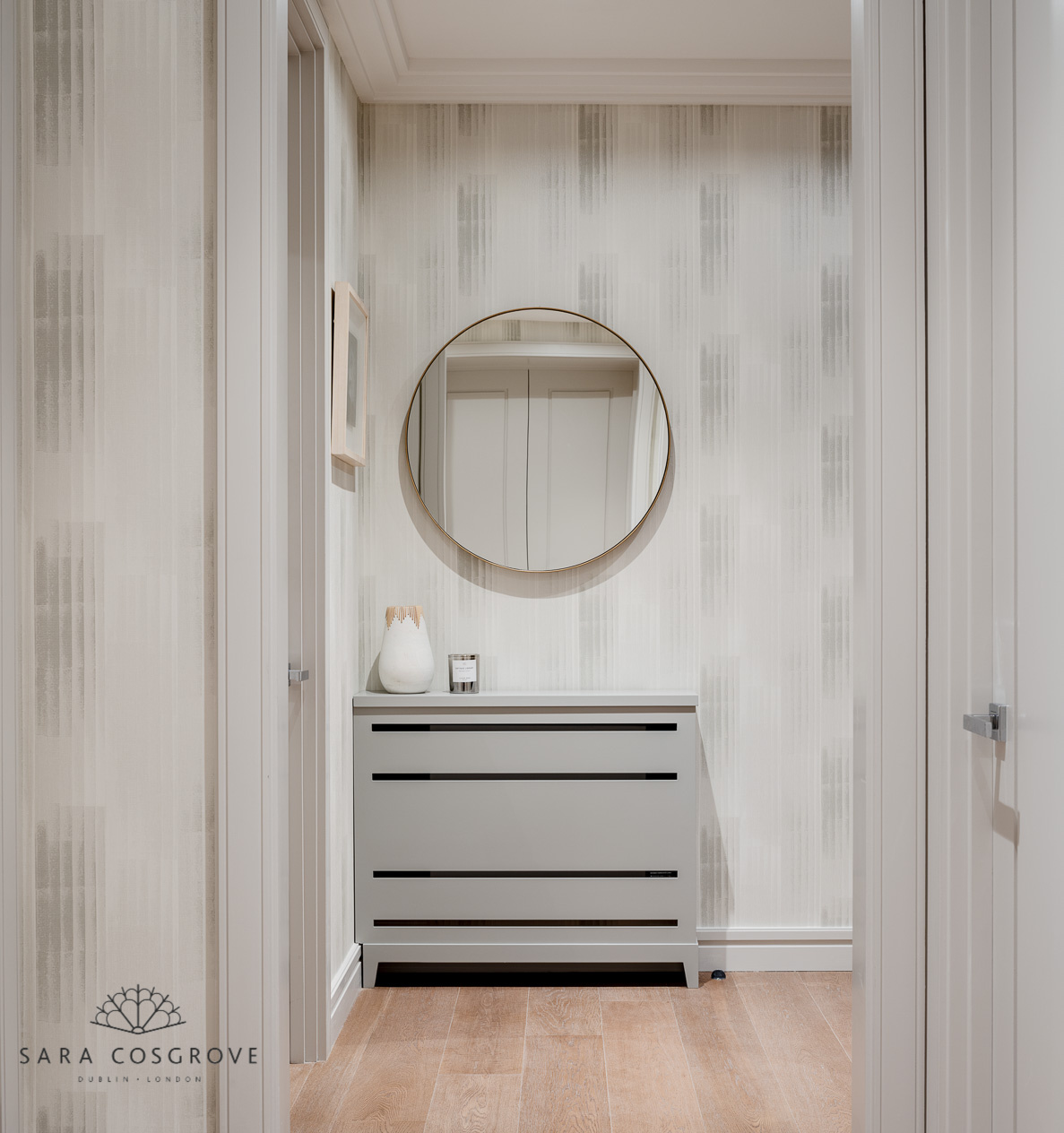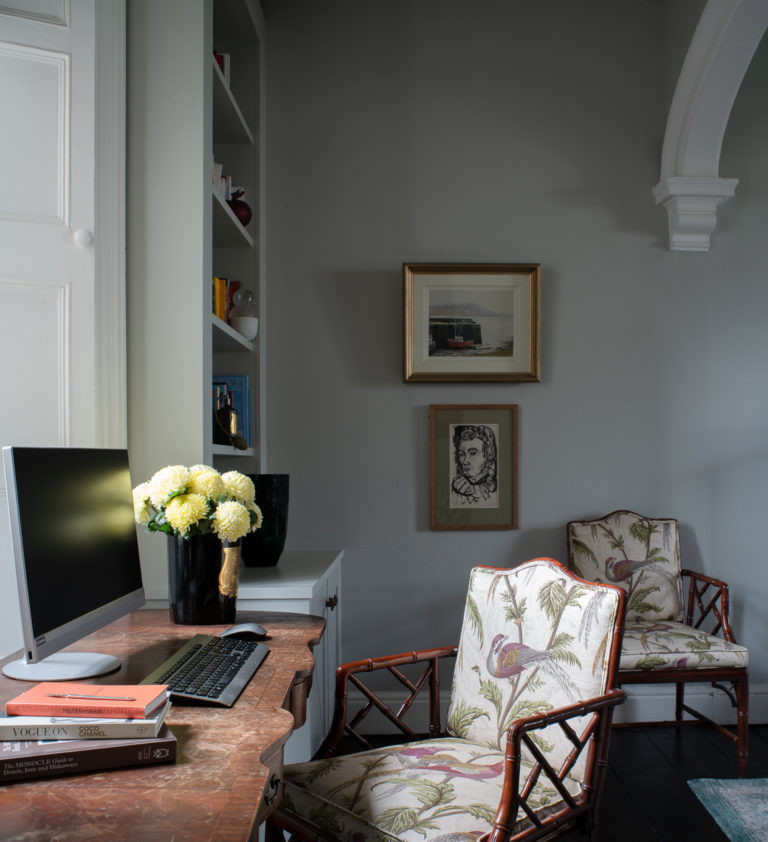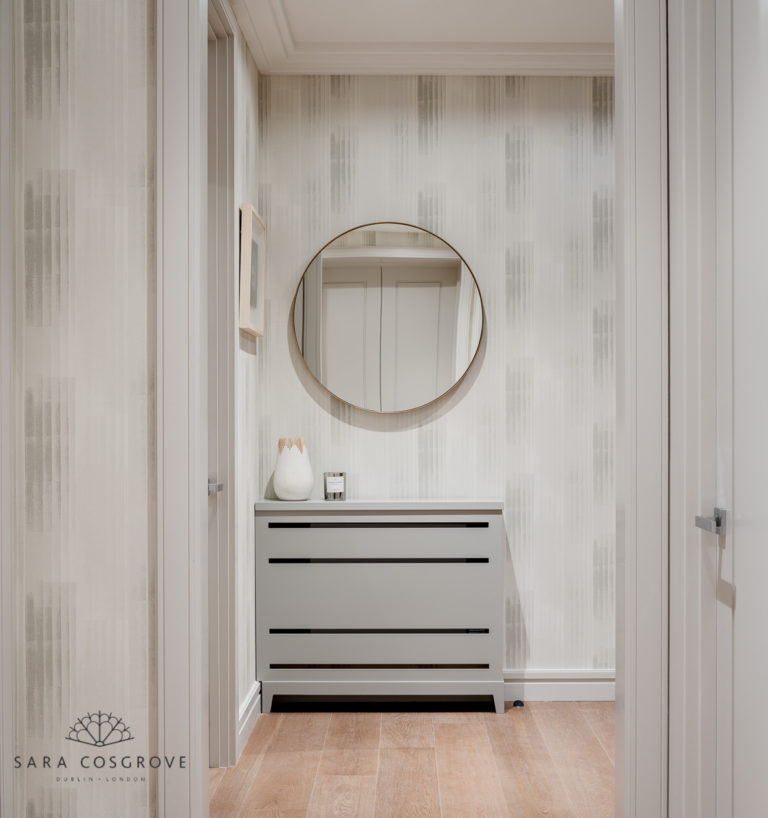INTERIOR DESIGN x COVID 19
- Interiors

Our team is back in the studio and busy working away this month, we are lucky to have the space and facilities to allow us to collaborate safely in this new world. As a result of this, we have been thinking about how our role will change to reflect the future of design and what areas of design will adapt and grow to accommodate the needs of the client as we move forward.
The home oFFice…
In a post Covid-19 world, there will be a surge in working from home – whether it is full time or a few days a week, people will need to be able to efficiently work in their home. This will mean that key factors such as of sound proofing, lighting and an adaptable space will need to be brought to the forefront when designing.
Every home will need to provide a functioning space to work, whether it is making use of the box bedroom or incorporating a home office into the plans of a new build. The home office will need to be practical but also comfortable to aid motivation and concentration.
Colour in the home will be more important than ever as we move backwards to a simpler lifestyle of spending more time at home. Colour gives your home personality and stimulates the brain so crucial for keeping motivated while working from home!

The Entrance halls…
The entrance of anywhere you visit these days, whether it be a shop, office, restaurant, or your own home, is now a transitional space for moving in between in the indoor and outdoor. The existence of cleansing stations is quickly becoming the norm, but designers will need to think of ways to make them attractive. Just because you need to keep hand sanitizer, masks and tissues by the front door does not mean it cannot look good!

The Technology…
Technological advances will be incorporated into public and private design spaces. When out and about, we will want to minimize the number of surfaces we touch.
As the home becomes a more multi functional space, needing to accommodate both work and home life, technology needs to keep up. High speed internet is only the beginning as people are looking around them and analyzing how often they need to touch a surface. Smart homes were previously a tech dream, but we foresee some elements needing to be a reality, minimizing the number of surfaces you need to physically touch on a day to day basis and instead, controlling many practical features of the home from one device.
The Materials….
Alongside reducing the number of surfaces that we touch, the materials we use will also need to be reconsidered. Touch plates, handles and switches will all need to be re-evaluated with public health and safety at the core of our design. We will need to assess how cleanable a material is and how long germs remain on different surfaces. The use of copper, brass, or bronze for push plates in public spaces is a strong example of this. These are natural antimicrobial materials and prevent frequently touched surfaces from preserving germs and bacteria.
The importance of plants inside and outside the home…
One positive from spending more time at home this year has been the development of green fingers around the Globe! From vegetable patches to potted house plants, the incorporation of greenery and the natural world into our homes has been crucial for our health and well being.
If you were lucky enough to have a garden or terrace space, you have more than likely added to your plant collection. And we foresee the desire to bring nature indoors as a big trend moving forward. From live walls where you can grow plants in the smallest of spaces to large potted greenery placed throughout the home. The desire to practice biophilia has only heightened in 2020.
